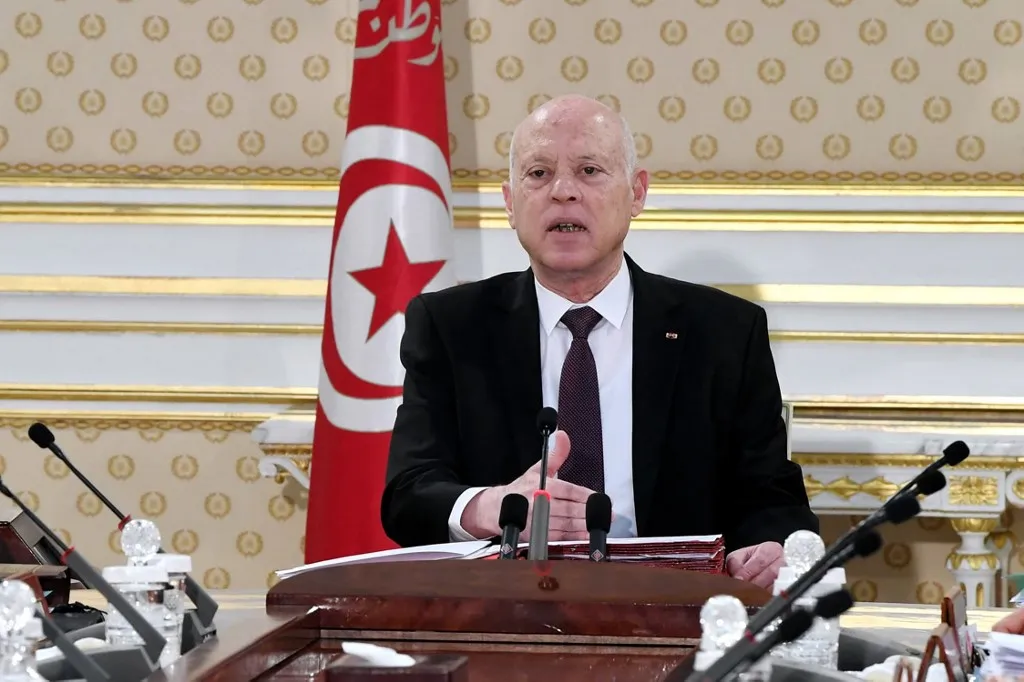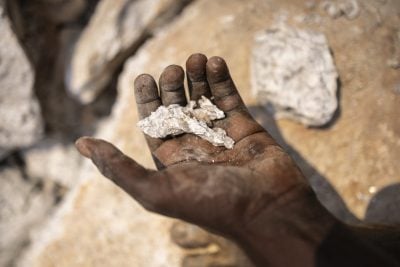With a sky-high bond yield of 27.9%, Tunisia is facing the highest borrowing cost in Africa. Given the continuous downgrade of Tunisia’s credit ratings that hinders access to cheap loans, the country initially resorted to reaching an agreement on a $1.9bn bailout loan from the IMF last October. However, now that the country’s president, Kais Saied (pictured above), has rejected it on the grounds that the conditions on it would exacerbate domestic inequality and social tension.
Does Tunisia deserve to be charged sky-high interest rates?
First, let’s look at Tunisia’s debt history. Tunisia’s debt challenges have mostly been externally induced. Until the early 2000s, Tunisia’s public debt level remained relatively low – its average debt-to-GDP ratio was 48% by 2002 and decreased to 39% in 2010. This period was marked by Tunisia’s prudent debt management policy with the establishment of domestic government fixed-income instruments, and commitment to fiscal sustainability under its Five-Year Development Plan.
However, the 2008 global financial crisis, the Arab Spring, and the terrorist attacks combined subsequently widened the trade-dependent country’s fiscal deficit from 0.6% of GDP in 2010 to 6% of GDP in 2017, thus weakening Tunisia’s debt repayment ability.
More recently, Tunisia’s economic challenges have been aggravated by the Covid-19 pandemic and the Russo-Ukrainian war. This has led to constrained liquidity as financial resources were spent on Covid-19 responses, alongside high inflation and depleting foreign exchange reserves and imports. Before the pandemic, Tunisia’s average debt-to-GDP ratio was 70.1% from 2015 to 2019 – just breaching the IMF debt threshold of 70%-to-GDP under the Debt Sustainability Analysis (DSA) for emerging markets in market-access countries. As of 2022, Tunisia’s public debt was estimated at 90% of its GDP, showing how external crises have impacted the country’s fiscal space.
To put this into context, Tunisia’s total external debt amounted to $41.6bn in 2021, accounting for only 3.87% of the total African external debt. Further, Africa’s debt only accounts for 1.16% of global external debt, highlighting the misleading narratives that the continent is heavily indebted and placing a significant debt burden on the rest of the world.
This is not the first time Tunisia and the IMF have engaged in debt restructuring. Over the past two decades, the IMF issued loans worth $1.74bn (2013) and $2.9bn (2016) to Tunisia. Yet this has had a limited impact. Economic growth remained stagnant while debt servicing to the IMF and World Bank increased. Cutting spending and deprioritising growth is clearly not working. A study reveals that the IMF’s austerity-driven fiscal reforms would do little to reduce Tunisia’s debt-to-GDP ratio below the IMF DSA debt burden threshold regardless.
Tunisia needs to unlock more concessional financing for long-term growth – not less
Although the country has a relatively high proportion of its population with access to safely managed drinking water (at 79% in 2020) and near-universal access to electricity (at 99.9 in 2021), 16.6% of the population still lives under the national poverty line as of 2021. Indeed, our recent analysis shows that Tunisia would need to invest around 18% to 24% of its GDP annually ($8.9bn-$12bn) for infrastructure development to achieve the Sustainable Development Goals (SDGs) – demonstrating that the proposed IMF loan of $1.9bn is a drop in the ocean in terms of financing needs.
Further, Tunisia would have to meet the stringent IMF loan conditions, involving cutting fuel subsidies, eliminating consumer goods subsidies, reducing public wage bills, and restructuring state-owned entities – all of which impact the most vulnerable populations Unsurprisingly, the loan has been met with resistance, including from President Saied against IMF “foreign diktats”, government divisions over the deal, and resistance from the Tunisian General Labour Union.
Why is it hard for Tunisia to access cheap loans?
First is the role of credit rating agencies (CRAs). Tunisia’s credit rating was downgraded by all three CRAs, with Fitch recently assigning a “CCC-“ – down from “CCC+”. Ultimately, this will result in loans becoming more expensive. A recent United Nations Development Programme study points to the inconsistent deviations from economic fundamentals in African credit ratings by different CRAs for countries in similar situations, due to insufficient data and subjective considerations. The study estimates that such biassed credit ratings cost Africa $74.5bn.
A report by the African Peer Review Mechanism and the UN Economic Commission for Africa noted that such biassed ratings are a result of CRAs being based outside of the continent, mistakes in publishing ratings and commentaries, herding behaviour of rating agencies, and notes “spontaneous ratings” and announcements falling outside rating calendar timelines.
Second, is the role of DSAs, which is the root cause of such problematic ratings.
These CRAs rely on biased DSAs, which only monitor, and are applied to, low- and low-middle-income countries, thus implying these countries are “risky” investment destinations. This is one of the main reasons that Tunisia does not get enough financing for development, has high-interest rates when it does borrow, and is proposed with IMF prescriptions that actually hinder the sustainability of development in the long run.
Tunisia does not deserve exorbitant interest rates
Tunisia does not deserve the exorbitant interest rates or the stringent conditions of the IMF deals. Reform is needed to address the broken DSA system that is constrained by a self-fulfilling debt narrative. DSA reform is possible – and assessment should consider the “positive” side of debt, such as the creation of growth-producing infrastructure, alongside providing agency to countries – such as having African governments conduct their own DSAs to reduce bias.
This holistic view of debt can help reduce interest rates and unlock more financing for development. It is only cheap, accessible loans in substantial volumes that will adequately support African countries, like Tunisia, to address their financing gaps to produce long-term, sustainable growth.
Want to continue reading? Subscribe today.
You've read all your free articles for this month! Subscribe now to enjoy full access to our content.
Digital Monthly
£8.00 / month
Receive full unlimited access to our articles, opinions, podcasts and more.
Digital Yearly
£70.00 / year
Our best value offer - save £26 and gain access to all of our digital content for an entire year!



 Sign in with Google
Sign in with Google 




